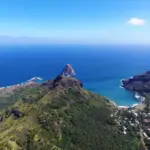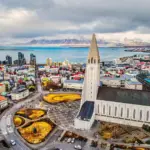
The Natural Wonder of Torres del Paine
Impressive, Majestic and Unforgettable
To the Torres del Paine are one of the most impressive destinations in South America, captivating visitors with their majestic beauty and breathtaking landscapes. Situated in Magellanic region and Chilean Antarctica, in the extreme south of Chile, the Torres del Paine National Park It's a true natural gem that attracts adventurers, nature lovers, and photographers from all over the world. With a unique combination of towering mountains, stunning glaciers, and crystal-clear lakes, the park offers a transformative experience that will remain in your memory forever.
A Refuge at the End of the World
Nestled amid the Patagonian Andes, Torres del Paine is a remote and isolated destination. This pristine area is a haven for those seeking to escape the hustle and bustle of modern life and reconnect with nature in its purest form.
Torres del Paine's geographic location contributes to its uniqueness; the strong maritime influence results in unpredictable weather conditions that can quickly alternate between radiant sunshine, strong winds, or heavy snow. These climate changes add another exciting element to the experience of exploring this magnificent mountain. national park.
More Than Just Landscape
Beyond their stunning natural beauty, the Torres del Paine mountains hold significant historical and cultural significance. In the traditions of the region's indigenous peoples, such as the Tehuelche people, these mountains are considered sacred and play a fundamental role in their stories and mythology. The Torres del Paine mountains have also been the site of important historical events, such as the crossing of the Strait of Magellan by European navigators in their search for a route to the East Indies.
This rich and fascinating history contributes to the park's unique atmosphere, offering visitors a deep connection to the past. Not every travel experience can combine spectacular landscapes with such a profound historical and cultural context as Torres del Paine.
When visiting this stunning destination in the south From Chile, travelers are confronted with the grandeur of nature and the history that shaped this unique region. Venture into Torres del Paine and discover the transformative power this extraordinary place has on all who venture into its wild paths.

Geography and landscape
The beauty of the extreme south of Chile
Located in the extreme south of Chile, in the Magallanes and Chilean Antarctic region, Torres del Paine is a true natural wonder. This remote and isolated area is home to some of the most stunning and breathtaking landscapes in the world. Strategically located in the heart of Chilean Patagonia, national park offers a unique combination of majestic mountains, imposing glaciers and crystal-clear lakes that leave any visitor in awe.

Spectacular Mountains: Natural Treasures of Torres del Paine
The mountains that make up Torres del Paine are true natural treasures. The park is dominated by the majestic presence of three iconic towers: the Central Tower, the North Tower, and the South Tower.
These monumental rock formations soar toward the heavens, reaching absurd heights and leaving onlookers breathless with their grandeur. The steep, sharp rocks of these towers are a testament to the brute force of nature over the centuries.

The sublime presence of glaciers and crystal clear lakes
In addition to the impressive mountains, Torres del Paine is also home to a series of imposing glaciers that add an additional layer of dramatic beauty to the landscape. These vast, constantly moving masses of ice create a magical and mesmerizing aura that envelops the entire region.
Furthermore, crystal-clear lakes, such as Lake Pehoé and Lake Grey, reflect the surrounding mountains and glaciers, creating a stunning visual spectacle. The vibrant colors of the water blend with the rock formations in the background are a natural masterpiece that captivates all who have the privilege of beholding it.
From towering mountains to majestic glaciers and crystal-clear lakes, the geography and landscape of Torres del Paine are truly remarkable. This remote region of Chile offers an experience unique in nature, where each element comes together harmoniously to create a truly captivating setting.

Unique flora and fauna
Ecosystem diversity
Torres del Paine is known for harboring an impressive variety of ecosystems, ranging from vast steppes to lush subantarctic forests. This diversity is the result of the region's unique combination of geographic, climatic, and topographical factors.
The steppes, characterized by open grasslands and sparse shrubs, are found primarily in the park's drier areas. The subantarctic forests, meanwhile, are rich in trees such as the lenga (Nothofagus pumilio) and coihue (Nothofagus betuloides), which provide refuge for many wildlife species.
Endemic species
One of the most fascinating aspects of the flora of Torres del Paine is the presence of endemic species, meaning they can only be found in this specific region. Two notable plants are the "notro" (Embothrium coccineum) and the "calafate" (Berberis buxifolia). The notro is a tall tree with vibrant red flowers that stand out among the surrounding vegetation.
Its flowers attract a variety of pollinators, such as hummingbirds and butterflies. The calafate is a thorny shrub with small, dark blue, edible fruits, widely used in local cuisine.
What to do in Torres del Paine
In Torres del Paine, Chile, there are several activities and attractions to enjoy. Here are some suggestions:
- Torres del Paine National Park: The park itself is a must-see attraction, with stunning landscapes, imposing mountains, and crystal-clear lakes. You can hike and enjoy the lush nature around you.
- Las Torres Base Viewpoint: One of the most famous and challenging trails in the park, which leads to the viewpoint with views of the famous Torres del Paine.
- Cuernos Viewpoint: Another popular viewpoint, offering a panoramic view of the Cuernos del Paine, the park's iconic rock formations.
- Salto Grande Viewpoint: A short trail that leads to an impressive waterfall, where you can appreciate the force of the water and the surrounding natural beauty.
- Lake Pehoe: A turquoise lake that offers stunning views of the surrounding mountains and glaciers.
- Lake Grey: Another impressive lake, known for its icy waters and the icebergs that float in it.
These are just a few of the many activities and attractions available in Torres del Paine. It's important to plan your trip carefully, considering the length of the trails and the need for overnight stays in campsites, cabins, or refuges.
Additionally, it is recommended to follow practical tips for visiting the park, such as being prepared for climate change and respecting environmental preservation rules.
How to get to Torres del Paine
To get to Torres del Paine, the most common base is Puerto Natales, Chile. Here are some options for getting there:
- Fly to Santiago: The most common way to reach Torres del Paine is by flying into Santiago, Chile's capital. From Santiago, you can catch a flight to Punta Arenas, the closest airport to the park.
- Fly to Punta Arenas: Another option is to fly directly to Punta Arenas, which is about 250 km from Puerto Natales. From Punta Arenas, you can take a bus or shuttle to Puerto Natales.
- Bus: Puerto Natales can be reached by bus from several cities in Chile and Argentina. Bus lines connect Puerto Natales to cities such as Punta Arenas, El Calafate, and Ushuaia.
- Car: If you prefer, you can also reach Torres del Paine by car. It's important to remember that the park has an entrance fee and that you'll need a vehicle suitable for the region's roads.
Once in Puerto Natales, you can hire transportation services to get to the park, such as buses or transfers. Additionally, it's important plan the trip well and consider the need to stay overnight in Puerto Natales or within the park, in campsites, cabins or refuges. It is always recommended to check updated information on transportation and plan in advance, especially during high season when demand is highest.

Where to stay in Torres del Paine
There are several accommodation options in Torres del Paine, both inside and outside the park. Here are some of the options:
- Inside the Park :
- Hotel Las Torres Patagonia
- Ecocamp Patagonia
- Hotel Lago Grey
- Cerro Guido Ranch
- Tierra Patagonia Hotel & Spa
- Hotel Pampa Lodge, Quincho & Caballos
- Rio Serrano Hotel + Spa
- Hotel del Paine
- Patagonia Camp5
- Awasi Patagonia – Relais & Châteaux
- Outside the Park :
- Konkashken Chalet
- Morrena Lodge
It's important to note that some of these options are quite expensive, and availability may be limited during peak season. Additionally, staying within the park may be more convenient for accessing hiking trails and other attractions, but it can also be more crowded and less peaceful than staying outside the park. Ultimately, the best option will depend on your budget, travel preferences, and availability.

Conclusion
Torres del Paine is a true natural treasure, offering a unique experience immersing you in the beauty of its flora and fauna. The park's diverse ecosystems provide a rich variety of landscapes and habitats to explore.
Furthermore, the presence of endemic species such as the notro and the calafate highlights the importance of conserving this fragile and unique ecosystem. Visiting Torres del Paine is an unmissable opportunity for nature lovers and biodiversity enthusiasts, where you can appreciate the exuberance of the natural landscapes while admiring the unique plants and animals that inhabit them.
Lucas Wanderlust has a tireless spirit of adventure, always seeking new travel experiences. Fascinated by the world and the possibility of exploring unknown destinations, he fell in love with the sense of freedom and self-discovery that traveling alone provides. With a backpack on his back and a heart open to the unknown, Lucas embarks on exciting journeys, where each destination becomes a unique chapter in his life story. He gives himself body and soul to the magic of solo travel, inspiring others to follow in his footsteps and discover themselves through adventure.







